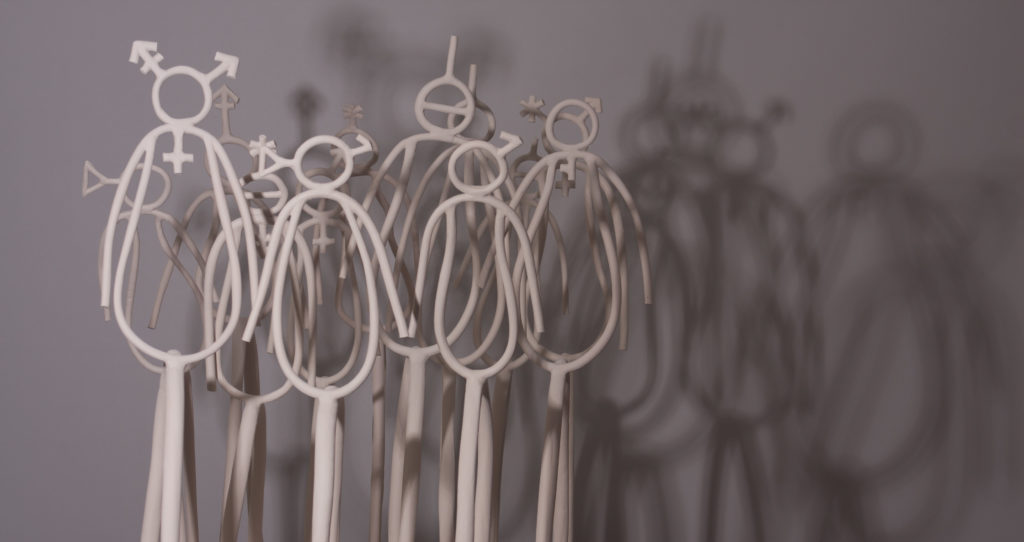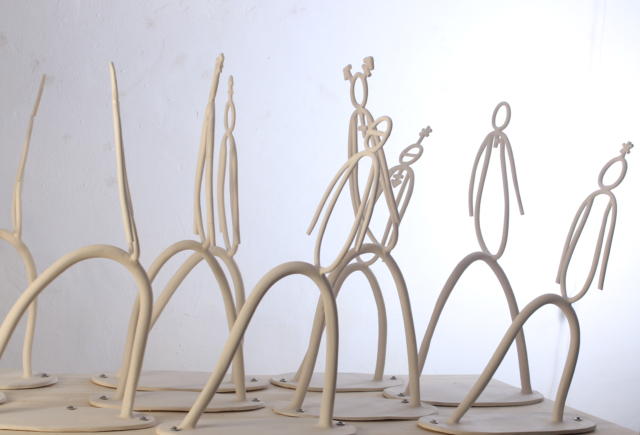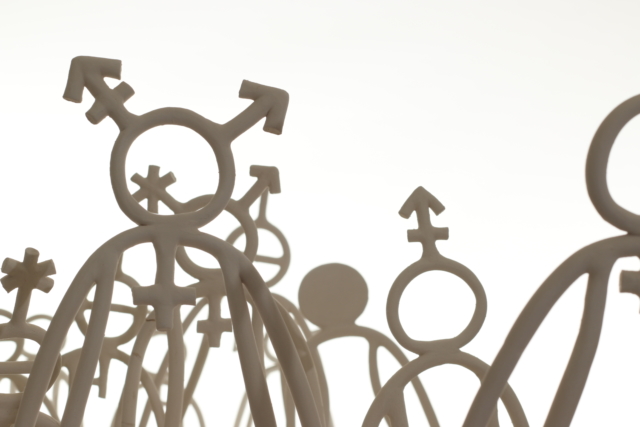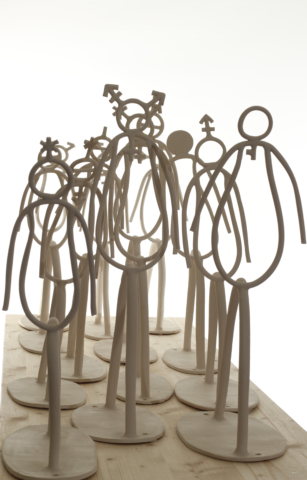
2018, ceramic objects, approx. 60 cm x 200 cm x 180 cm
“Hard and fast lines…
…are incompatible with the theory of evolution – even the boundary lines between vertebrates and invertebrates are no longer fixed, nor are those between fish and amphibians, and the distinctions between birds and reptiles are disappearing more and more every day.”
Friedrich Engels formulated this thought between 1873 and 1886 in his work Dialectics of Nature. In doing so, he opened a door to new possibilities of thinking, which later resurfaced in gender theories and debates on sex and society. Today, this discourse extends beyond humanity itself, as the boundaries between the body and the cybernetic and algorithmic systems that increasingly influence perception and knowledge are becoming ever more fluid.
Identity, therefore, is not a fixed state but an interplay of forces, influences, and opposites. Identities can dissolve or merge into one another. New forms emerge from the inner contradictions of reality, and a definitive either-or stands in opposition to everything that is alive.



